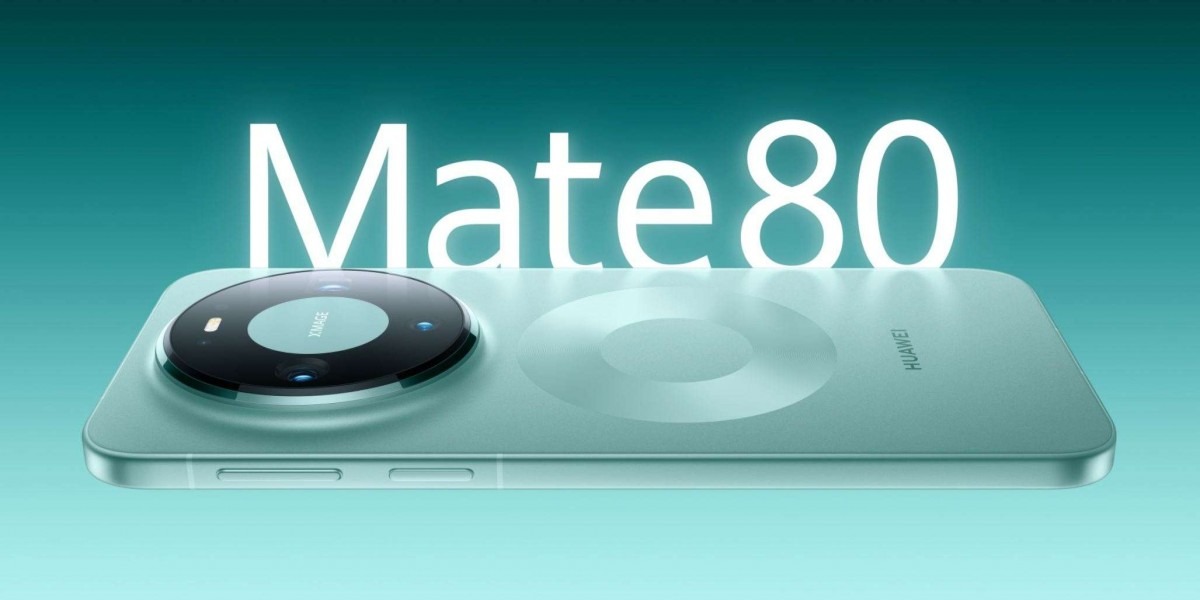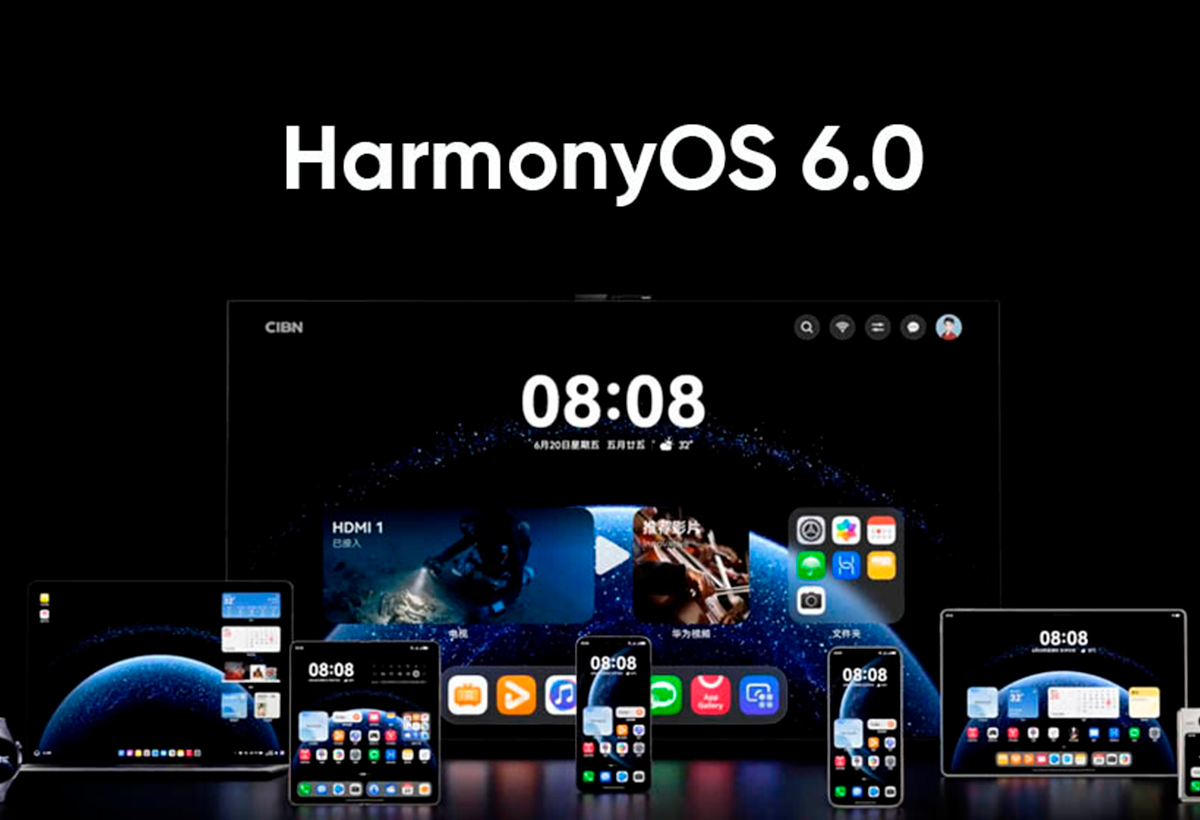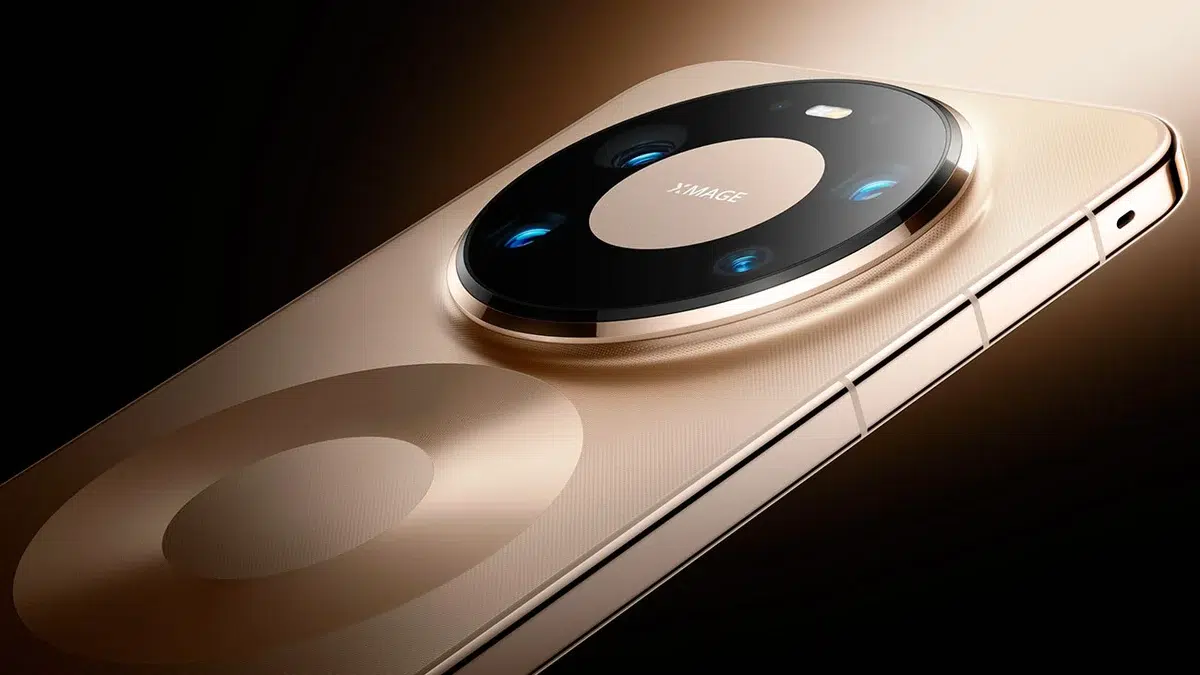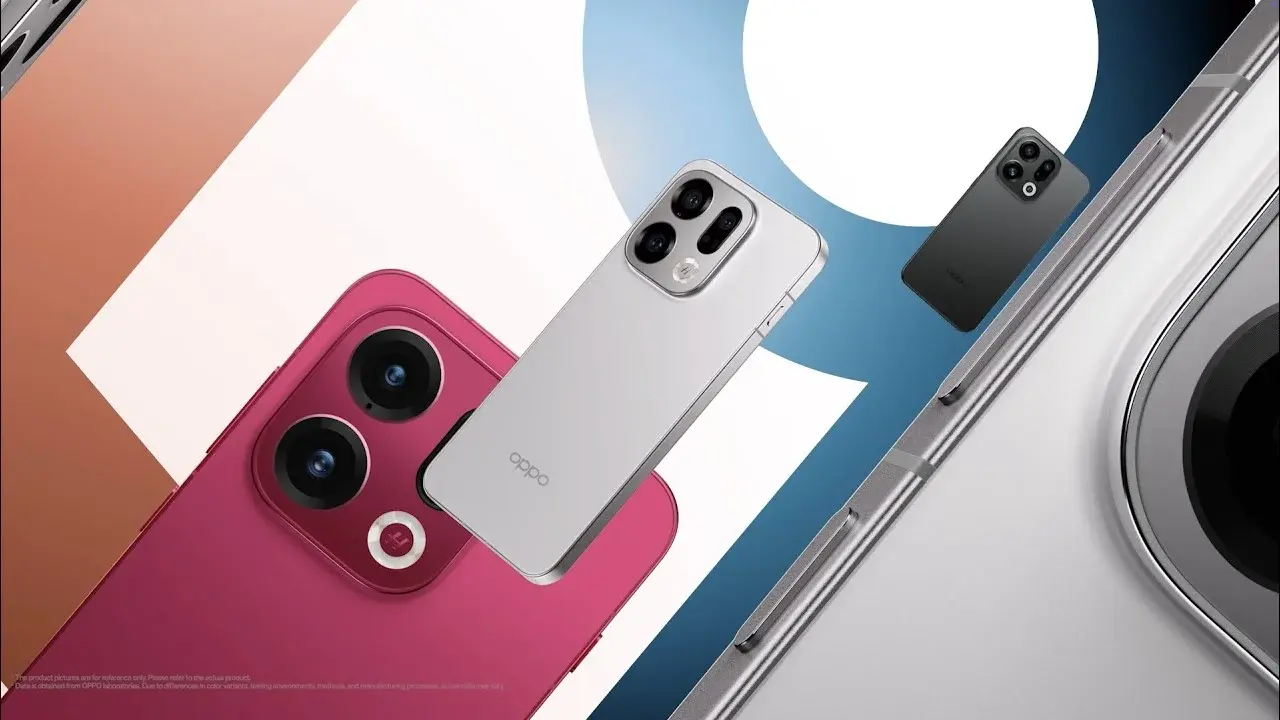- Launch in China of the Huawei Mate 80 series with four models: Mate 80, Mate 80 Pro, Mate 80 Pro Max and Mate 80 RS Ultimate Design.
- New Kirin 9020, 9030 and 9030 Pro chips, OLED displays up to 6,9 inches and a maximum brightness of 8.000 nits.
- Batteries up to 6.000 mAh, fast charging up to 100 W and a new Outdoor Exploration Mode promising up to 14 days of restricted use.
- 50MP cameras with dual periscope telephoto lenses in the Mate 80 Pro Max and a dual-ring metal design with second-generation Kunlun glass.

Huawei has decided to raise the bar with its new generation of high-end devices. The family Mate 80 launches in China with several models and a clear idea: Minimize dependence on third parties thanks to proprietary chips, operating system and solutionsIt is not a simple generational change, but a further step in the company's technological autonomy strategy.
The series arrives with top-of-the-line hardware, very bright screens, New satellite connectivity features and an extreme power saving mode which is aimed directly at those who spend many days away from a power outletFor now, everything remains within the Chinese market.But what these Mate 80 phones achieve could influence what we see in Europe if Huawei returns to compete strongly in the high-end market.
Huawei Mate 80: the entry-level model doesn't fall short

The standard Mate 80 serves as the entry point to the series, but it's not exactly lacking in specifications. It maintains the iconic double ring design on the back and uses second-generation Kunlun glass to improve resistance to shocks and drops, a detail usually seen in higher-end models.
The screen is a panel 6,75-inch flat OLED with LTPO technologycapable of adapting the refresh rate between 1 and 120 Hz. The resolution is around X And, according to data shared by the brand itself and specialized media, it can reach peak brightness up to 8.000 nits, which puts it on par with the brightest models on the market.
Inside, the Mate 80 features the Kirin 9020 chip, the same one the company has used in the Pura 70 series. This processor relies on optimization of HarmonyOS 6 to maximize fuel consumption and performance, with versions starting from 12 GB of RAM and 256 GB of storageand that They can have up to 16 GB of RAM and 512 GB of internal storage..
The battery is one of its strong points: the Mate 80 offers 5.750 mAh capacity, compatible with 66W wired fast charging and 50W wireless chargingOn paper, it should be a phone capable of easily completing long days of intensive use, with enough battery life to get through the day without any problems.
In photography, the base model includes a main sensor of 50 megapixels with variable apertureOptical image stabilization and an imaging system that Huawei describes as the second generation of its "Red Maple" platform. It is accompanied by a 40MP ultra-wide-angle lens and a 12MP telephoto lens with approximately 5,5x optical zoom, in addition to a 13 MP front camera with support from 3D sensor for advanced facial recognition.
Huawei Mate 80 Pro: New chip and leap in fast charging

The Mate 80 Pro shares much of its design and screen with the standard model, keeping the panel 6,75 inch LTPO OLED, 1.280 x 2.832 pixel resolution, up to 120 Hz and a declared maximum brightness of 8.000 nitsThe key difference lies in the processor and some extra connectivity and charging features.
This model debuts the Kirin 9030, a SoC that, according to Huawei, represents a significant leap forward compared to the 9020, with performance improvements that can be around 35-40% depending on the task. It integrates artificial intelligence capabilities at the hardware level. for features such as advanced video editing, real-time object removal, or instant translation on the device itself.
The battery is kept in 5.750 mAhBut here, fast charging takes a step further: the Mate 80 Pro supports up to 100W wired and 80W wirelessThese figures place it among the phones that recover energy the fastest. It also retains reverse wireless charging to power accessories or even other phones.
In terms of photography, the main camera setup is similar to that of the Mate 80, but the telephoto lens is replaced by a 48MP sensor with macro function and f/2.1 aperturedesigned for both long shots and very close-up shots. The ultra-wide-angle lens remains at 40 MP., and the The main camera remains at 50 MP with variable aperture.
In addition, the Mate 80 Pro It incorporates bidirectional satellite connectivity via the Beidou networkThis allows sending and receiving messages in areas without conventional mobile coverage. All of this runs on HarmonyOS 6, with memory options ranging from 12 GB + 256 GB to 16 GB + 1 TB.
Huawei Mate 80 Pro Max: Record-breaking screen and dual periscope telephoto lens
The Mate 80 Pro Max is positioned as the technological ceiling of the seriesThis is the model with which Huawei aims to directly rival Samsung's "Ultra" phones or Apple's "Pro Max" phones, with a very clear objective: a screen that aims to become the benchmark for the market.
Your panel is a 6,9-inch dual-layer OLED (Tandem OLED)with FHD+ resolution (around 2.848 x 1.320 pixels), a variable refresh rate of 1 to 120 Hz, and a peak brightness that Huawei puts at 8.000 nitsThis data places it above recent offerings from other Android manufacturers and benchmark flagship devices, at least on paper.
The chassis is built in metal with a luminous micro-textured finishreinforced by second-generation Kunlun glass on both the front and rear. Despite the The size has increased, the thickness remains at about 8,25 mm and the weight is around 239 gramsreasonable figures for a device of this format and battery.
Inside we find the Kirin 9030 Pro chipThe most powerful version of Huawei's new processor family. It's a SoC focused on AI. designed to smoothly run demanding gamesContent editing and AI features of HarmonyOS 6. It comes with 16 GB of RAM and options of 512 GB or 1 TB of storage, without lacking modern connectivity such as WiFi 7, Bluetooth 6.0, NFC and dual GPS.
The camera is one of its biggest selling points. The Mate 80 Pro Max boasts a four rear camera system: 50MP main sensor with high dynamic range, a 40MP ultra-wide-angle lens, and two 50MP periscope telephoto lenses. One is designed for medium and macro distances, with an aperture of around f/2.1, while the second is geared towards long-range photography (f/3.2).
Between the two, Huawei promises optical zoom up to 12,4x and up to 100x digital zoom, with the help of artificial intelligence algorithms for stabilization and detail enhancement. On paper, it's one of the brand's most complete camera systems, comparable to offerings like nubia Z80 Ultra, with video recording up to 4K and advanced features such as telephoto slow-motion.
The battery goes up to 6.000 mAhMaintaining fast charging at 100W wired and 80W wireless, in addition to reverse charging. A key element is added for those who travel outside the city: the support for full satellite calls through the Tiantong network, not just text messages, which makes the device an interesting tool for outdoor activities or emergency situations.
Huawei Mate 80 RS Ultimate Design: the luxury of the family

Above the Pro Max is the Huawei Mate 80 RS Ultimate Design, a variant that replicates almost all of its technical specifications, but wraps them in a much more exclusive format and with some extra hardware.
This model abandons the classic rear glass in favor of a high-strength ceramic structure and a polished titanium chassis, with a "star diamond" or sporty design pattern depending on the version. The idea is to transform the phone into a luxury item, more akin to a collector's piece than a conventional mobile phone.
In terms of memory, the RS Ultimate Design goes up to 20 GB of RAM, accompanied by 512 GB or 1 TB of internal storage. It retains the Kirin 9030 Pro, the 6,9-inch OLED screen, the dual periscope telephoto camera system, and the 6.000 mAh battery with the same ultra-fast charging.
Huawei reinforces the premium character by including in the box two fast chargers, two USB-C cables and a specific case for this model. Furthermore, it's the only one in the range that offers official support for dual eSIMdesigned for users who constantly move between countries or work and personal lines of business.
Outdoor Exploration Mode: extreme autonomy for long adventures

One of the most striking aspects of the Mate 80 series isn't the pure hardware, but the software. Huawei is previewing a "Outdoor Exploration Mode" designed for those who spend many days in the mountains, on long-distance routes, camping, or in areas without continuous access to electrical outlets.
According to information provided by the brand and initial developments, this mode is designed to prioritize essential functions and drastically reduce consumptionThis isn't your typical energy saving mode that slightly lowers the brightness and limits background applications, but rather... a much more restrictive profile, where the mobile phone behaves almost like a survival device.
Huawei talks about up to 14 days of “extreme and controlled” use with this mode activated. It's important to put this figure in context: it doesn't refer to two weeks of normal use with social media, video streaming, and maximum brightness, but to a scenario in which... They prioritize position, basic communication (including satellite imagery in models that include it), The camera when it's absolutely necessary, and a few other key functions.
Another aspect that the brand emphasizes is its performance in cold conditions. Batteries suffer especially at low temperatures.And Outdoor Mode promises to stabilize consumption to avoid sudden drops in autonomy when the temperature drops, something relevant for those who practice winter sports or high mountain routes.
In a market where almost all manufacturers have focused innovation on faster charging, Huawei is trying to differentiate itself by adding a tool that addresses a very common problem: that the mobile phone doesn't turn off when it's needed mostboth for outdoor getaways and in emergency situations, power outages or long journeys.
HarmonyOS 6, satellite connectivity and resilience

The entire Mate 80 series comes with HarmonyOS 6 pre-installedThis is Huawei's own operating system, without Google services or applications, focused on close integration with the rest of the brand's ecosystem and heavily supported by artificial intelligence functions.
The system includes the assistant XiaoyiIt is capable of automating tasks, assisting with one-click video editing, and managing personalized recommendations. This AI layer combines with the power of the Kirin 9020, 9030, and 9030 Pro to deliver advanced features without relying heavily on the cloud, which is particularly relevant in a context of unreliable connectivity.
In terms of connectivity, the Mate 80 Pro and Pro Max stand out for their support for Beidou and Tiantong satellite networksIn the case of the Pro, two-way messaging via Beidou is allowed; the Pro Max raises the bar with full emergency calls via Tiantong, even when there is no mobile network or WiFi available.
The family also boasts of high levels of protection against water and dustWith IP68 and even IP69 certifications in some models, which is unusual for phones of this type, the package is rounded out by features such as 3D facial recognition on the front, side-mounted fingerprint readers, and the widespread use of second-generation Kunlun glass to reduce the risk of breakage.
Prices in China, approximate exchange rate to euros, and questions about Europe

For now, The entire Huawei Mate 80 series has been launched exclusively in China.The company has not confirmed any dates or concrete plans for its launch in Europe or Spain, where its presence in the high-end market has been intermittent in recent years due to well-known restrictions.
In the Chinese market, the range is positioned as follows (Prices converted to euros at the current exchange rate(without taking into account possible local taxes or distribution margins in Europe):
- Huawei Mate 80 12 + 256 GB: 4.699 yuan (around 573,5 Euros).
- Huawei Mate 80 12 + 512 GB: 5.199 yuan (about 634,5 euros).
- Huawei Mate 80 16 + 512 GB: 5.499 yuan (approximately 671,1 Euros).
- Huawei Mate 80 Pro 12 + 256 GB: 5.999 yuan (approx. 732,35 Euros).
- Huawei Mate 80 Pro 12 + 512 GB: 6.499 yuan (about 793,35 Euros).
- Huawei Mate 80 Pro 16 + 512 GB: 6.999 yuan (around 854,35 Euros).
- Huawei Mate 80 Pro 16GB + 1TB: 7.999 yuan (about 976,2 Euros).
- Huawei Mate 80 Pro Max 16 + 512 GB: 7.999 yuan (approx. 976,2 Euros).
- Huawei Mate 80 Pro Max 16GB + 1TB: 8.999 yuan (about 1.098,1 Euros).
- Huawei Mate 80 RS 20 + 512 GB: 11.999 yuan (around 1.464,37 Euros).
- Huawei Mate 80 RS 20GB + 1TB: 12.999 yuan (about 1.586,3 Euros).
Beyond the direct change, we'll have to see if Huawei decides to bring any of these models to the European market And, if so, how does it adjust its pricing strategy taking into account the absence of Google services and competition from manufacturers with a strong presence in Spain such as Samsung, Xiaomi, or OPPO FIND X9 PRO.
The new Mate 80 family outlines a high-end range focused on controlling the entire technological chain: proprietary chips, proprietary operating system, integrated satellite connectivity, and an extreme autonomy mode Designed to break the daily routine. If they ultimately launch in Europe, they'll find consumers accustomed to other platforms, but also a niche for those who prioritize battery life, photography, and durability over traditional services.
I am a technology enthusiast who has turned his "geek" interests into a profession. I have spent more than 10 years of my life using cutting-edge technology and tinkering with all kinds of programs out of pure curiosity. Now I have specialized in computer technology and video games. This is because for more than 5 years I have been writing for various websites on technology and video games, creating articles that seek to give you the information you need in a language that is understandable to everyone.
If you have any questions, my knowledge ranges from everything related to the Windows operating system as well as Android for mobile phones. And my commitment is to you, I am always willing to spend a few minutes and help you resolve any questions you may have in this internet world.

